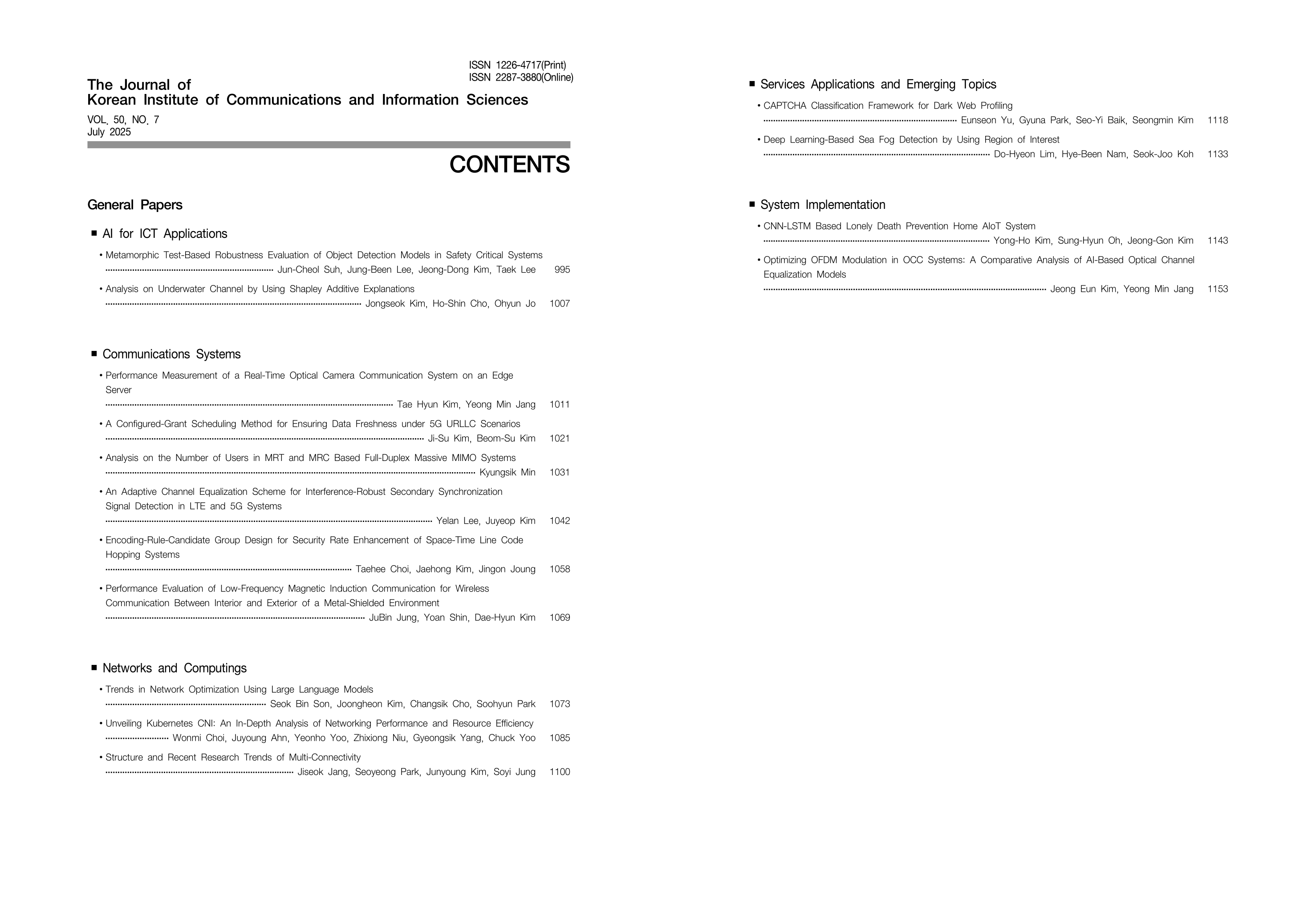Analysis on Underwater Channel by Using Shapley Additive Explanations
Vol. 50, No. 7, pp. 1007-1010, Jul. 2025
 10.7840/kics.2025.50.7.1007
10.7840/kics.2025.50.7.1007
PDF Full-Text
Abstract
Statistics
Cumulative Counts from November, 2022
Multiple requests among the same browser session are counted as one view. If you mouse over a chart, the values of data points will be shown.
Multiple requests among the same browser session are counted as one view. If you mouse over a chart, the values of data points will be shown.
|
|
Cite this article
[IEEE Style]
J. Kim, H. Cho, O. Jo, "Analysis on Underwater Channel by Using Shapley Additive Explanations," The Journal of Korean Institute of Communications and Information Sciences, vol. 50, no. 7, pp. 1007-1010, 2025. DOI: 10.7840/kics.2025.50.7.1007.
[ACM Style]
Jongseok Kim, Ho-Shin Cho, and Ohyun Jo. 2025. Analysis on Underwater Channel by Using Shapley Additive Explanations. The Journal of Korean Institute of Communications and Information Sciences, 50, 7, (2025), 1007-1010. DOI: 10.7840/kics.2025.50.7.1007.
[KICS Style]
Jongseok Kim, Ho-Shin Cho, Ohyun Jo, "Analysis on Underwater Channel by Using Shapley Additive Explanations," The Journal of Korean Institute of Communications and Information Sciences, vol. 50, no. 7, pp. 1007-1010, 7. 2025. (https://doi.org/10.7840/kics.2025.50.7.1007)
Vol. 50, No. 7 Index



